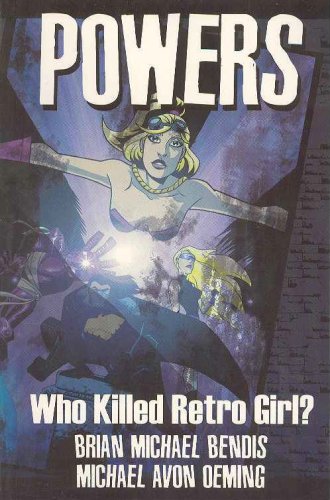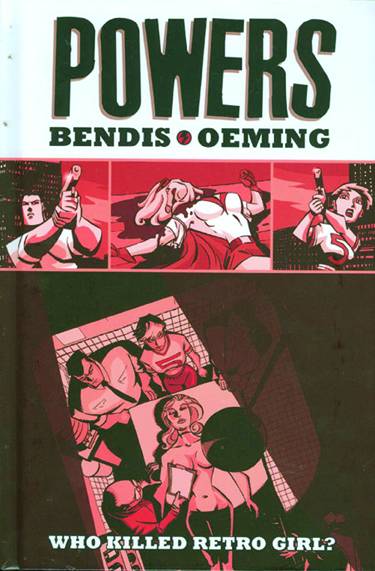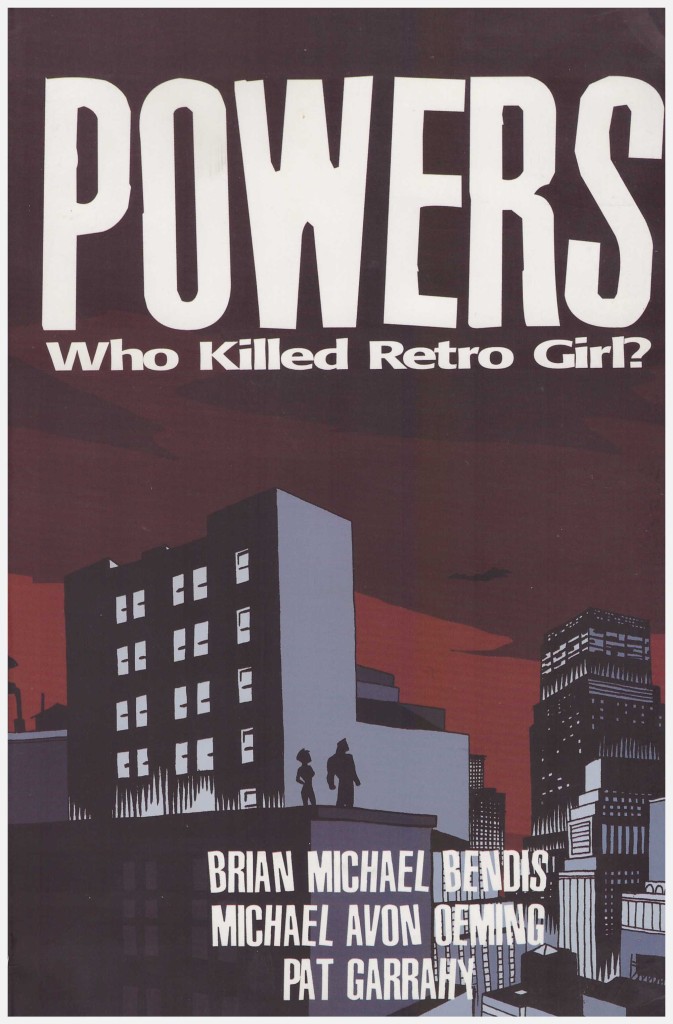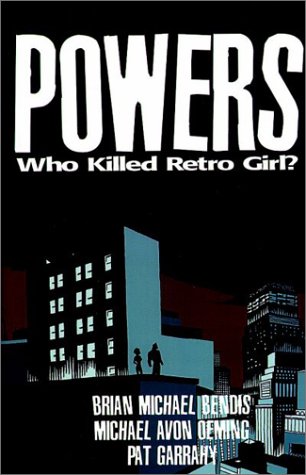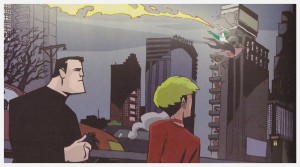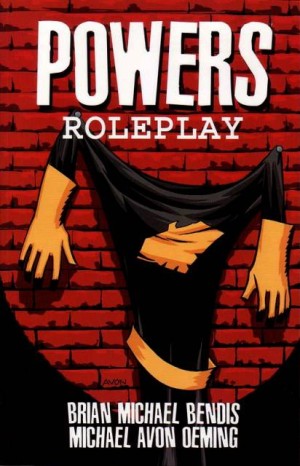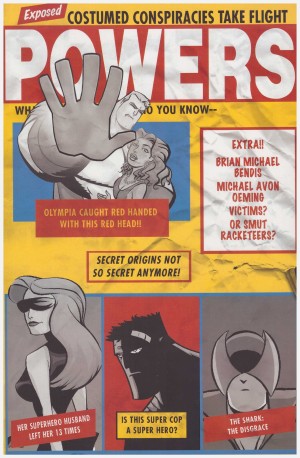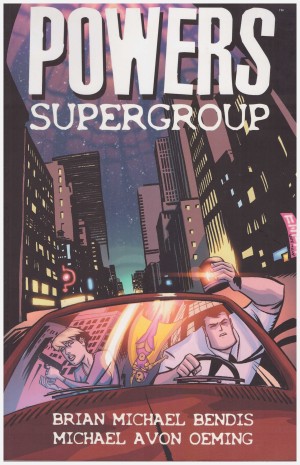Review by Frank Plowright
Had someone told Brian Michael Bendis and Michael Avon Oeming on beginning Powers that their creator owned series would run to sixteen volumes and counting they’d surely have bitten their arms off for the opportunity in 2000. It’s a solid concept that plays to the strengths of both creators, yet the longevity is down to a job consistently well done.
We’re introduced to Chicago homicide detectives Christian Walker and Deena Pilgrim. Walker is imposing and taciturn and Pilgrim slight, talkative and potty-mouthed. Over the course of the series both progress considerably, and, starting with this volume, secrets are revealed. In their world superheroes and associated paraphernalia are commonplace, and their cases are all connected with superhumans. It’s a clever method of combining Bendis’ facility for crime drama with a tilt at the more lucrative superhero market.
Their opening investigation, as the title suggests, is tracking down the murderer of popular superheroine Retro Girl, well-liked, and discovered outside a school with her throat slashed. From the starting point of a blank page, investigating Retro Girl’s life and background follows the techniques of police procedural drama, incorporating an eccentric cast. A particularly effective, witty and illuminating glimpse into this world is provided by the second chapter’s opening discussion with the coroner.
Bendis has a vast facility for creating quick-witted, yet naturalistic dialogue with a sardonic tone, and in Pilgrim he created the motor-mouthed voice to fully express this talent. She has no off button, comments on everything and can single-handedly prolong a scene by several pages. How any reader will react to Powers is dependent on how they’ll react to Pilgrim. Some will find her a constant irritation, roadblocking narrative progress, while others will relish the rich diversions. Walker is altogether more sympathetic, a trait displayed by his caring attitude toward Calista, a young girl orphaned as the story begins.
Oeming is an adaptable artist here cartooning in broad strokes, utilising heavy black shading. It’s an atmospheric style that serves the series well. Pat Garrahy only colours this and the following volume, Roleplay, yet equally establishes a look for the entire series, with sparing use of multiple colours. An effective piece of police equipment, both narratively and artistically, is the drainer, a device that prevents any super power operating. It’s standard for interrogation rooms, in which it dispenses a dark green glow, so heightening the tension of such scenes.
A fair quantity of bonus material is included. There is the eight episode promotional comic produced for a news sheet, the script for the first issue, which Bendis promises is unedited, and production sketches, layouts and covers from the original comics. A neat touch is the final section identifying characters peppered throughout the book in background visuals. These were a mixture of recognisable and new characters donated by an assortment of creators.
The main narrative wends towards a bold and unpredictable ending, also indicative of the series, and concludes a fine introductory statement. The first seven volumes of Powers can be read and understood individually, although absorbing them out of order considerably dampens the effect of several well-placed revelations that occur. Beyond that the threads of continuity are greater, and from Legends the series is best consumed in publication order.
